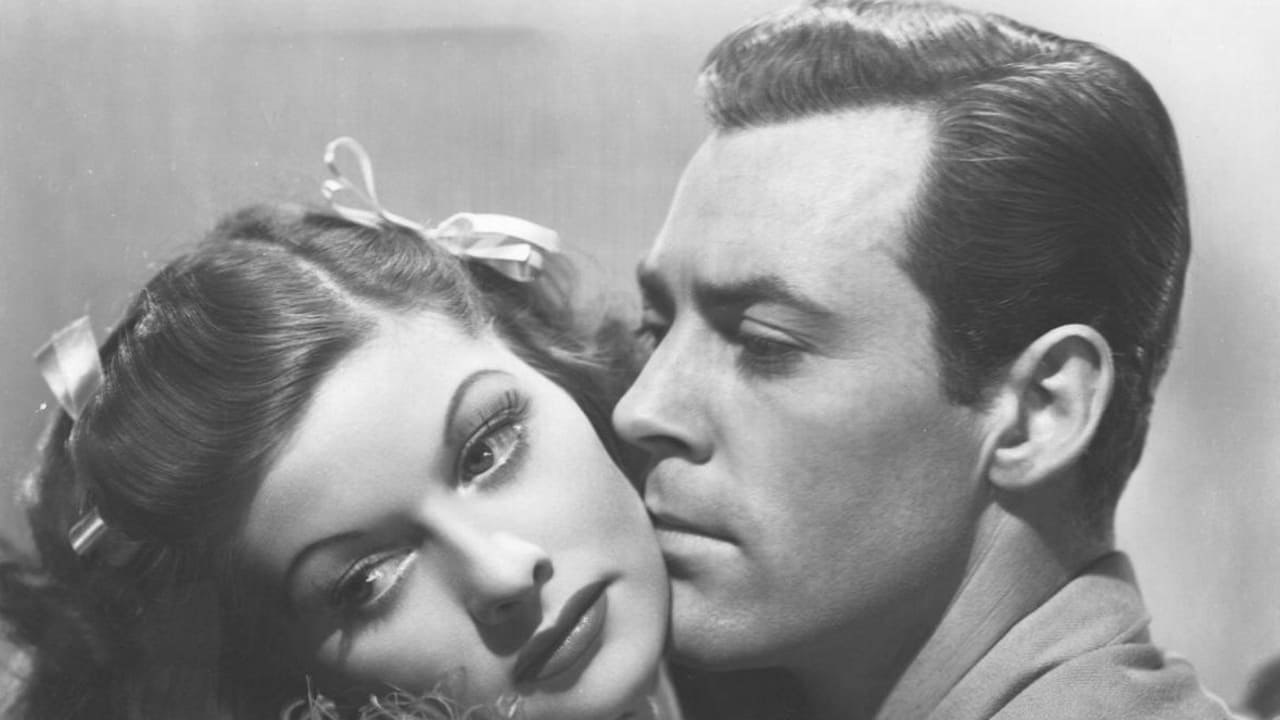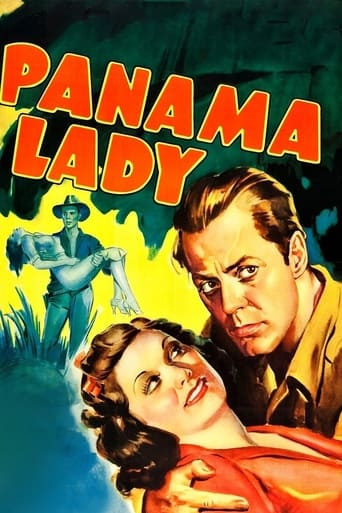



This movie is the proof that the world is becoming a sick and dumb place
View MoreSERIOUSLY. This is what the crap Hollywood still puts out?
View MoreI really wanted to like this movie. I feel terribly cynical trashing it, and that's why I'm giving it a middling 5. Actually, I'm giving it a 5 because there were some superb performances.
View MoreThis film is so real. It treats its characters with so much care and sensitivity.
View MoreBack in the pre-TV days when the major Hollywood studios were allowed to own chains of theatres across the country to show the films they made and profit from both sides of the business, they had to keep those houses booked and so churned out a steady stream of "programmers" to fill their screens between the major "prestige" releases. Running between 60 and 90 minutes (the equivalent of TV shows today), these films were more than training grounds for later star performer and directors, they frequently provided quality work for studio people between "A List" projects. The quality varied with the studio, but RKO-Radio was one of the best and PANAMA LADY is much better than some suggest. Any fan of Lucille Ball's work should mark it as a "must see." It will strongly remind them of her better known dramatic work for director John Farrow in her next film the same year, FIVE CAME BACK.A product of an era when the words of a screenplay mattered more than the explosions and silly chase scenes, PANAMA LADY (an RKO-Radio release now available mainly in a good print on a long out-of-print 1983 VHS release - #7001 - of a 1955 "C&C Movies for Television" print), was an above average reputed remake of an earlier pre-code/proto-Noir film about a girl caught up in the "white slave" (prostitution) trade. RKO, facing the prudish Production Code and a rising star in Lucille Ball (STAGE DOOR, ROOM SERVICE and a couple of her "Anabel" films behind her and TOO MANY GIRLS, DU BARRY WAS A LADY and BEST FOOT FORWARD still in front of her) expunged most of the references to sex in favor of timely (WWII was raging in China and would start in Europe in four months although the U.S. would hold on to its neutrality for another two and a half years) gun running and jealousy subplots and got solid dramatic performances from Lucy and her co-stars (especially Allan Lane as the good boyfriend and Donald Briggs as the bad).Taken seriously, the 65 minute spring 1939 (May 12) release offers a lot of solid fun. The attempt at twists in the resolution of the South American plot and the O'Henry-esquire finale do come across as a little strained, but the production getting there is generally first rate after the stock footage of New York landmarks in the opening "framing" scene. Had first tier screenwriter Michael Kanin (Garson's older brother, one film away from his Oscar winning WOMAN OF THE YEAR screenplay) worked a little harder on the last five or six minutes, the film might be far better remembered today - or was he done in by second time director Jack Hively (already having edited THE AFFAIRS OF ANABEL with Lucy and one of the SAINT films he would go on to direct) pushing too hard to finish on time and under budget? A decade later, over at Universal International, Hively was also director for one of their rare Broadway musical transfers, ARE YOU WITH IT - one of his last full Hollywood directing credits. It's one of Donald O'Connor's best performances, but also suffers from production and editing indignities which may have left a lot of good material on the cutting room floor.
View MoreMost of her admirers do not realize that for many years prior to her TV career, Lucille Ball was a very competent, dishy, and prolific motion picture actress. This particular opus, though both sordid and incredible, does present Miss Ball, with billing over the title, in an undoubtedly bizarre concoction, that has, for whatever reason, been strangely overlooked for many years. Most interesting perhaps is that her character's name is "Lucy,"(the first time Miss Ball ever portrayed a character with that name--though this particular 'Lucy' has nothing in common with Mrs. Ricardo.)Essentially it is celluloid pulp fiction detailing the romantic and criminal mis-adventures of a New York show girl reduced to dancing in the floor show of a Panamanian dive. While thus employed, she is innocently implicated in the robbery of a drunken oil prospector, who only drops jail charges, if she will agree to become his live in--"housekeeper." Enter true love here.The illicit and licentious angles of the story, with its strong intimations of prostitution at the dive, and free-love at the prospector's camp, (with a interloper-native girl named "Cheema" no less), are unmistakably suggested, through "Sadie Thompson" style dialogue and atmosphere. For example, one of the "B girls", named Pearl, decked in cheap jewelry over a flowered frock, achieves unparalleled camp value with her lowered eyelids, hands on the hips swagger as she moves in for the kill--greeting her would be conquest with the highly original, "Hello handsome." RKO's technical accoutrements, as would be expected, are A-1, though this is clearly a second feature. Miss Ball plays a decent and attractive doll, who retains her virtue, despite being forced to tramp the streets or the pampas, as the case would have it, (perhaps owing to her lack of education--she proudly mis-pronounces "petroleum" as "petoleum" !Though much of the dialogue is painfully stereotypical, (Cheema witnessing a murder, declaims in threateningly thick accents with finger pointed accusingly, "Cheema tell tribe!" the story manages to engage by sheer force of its outrageous plot. Even better, is Evelyn Brent, as the madame "Lenore" (with a trollopish wardrobe that anticipates Carol Burnett as "Eunice") who gets such enunciate such subtleties as "...Be nice to Mr. McTeague Lucy or I'll fire you!"With such dialogue as this it would appear the script is written by and for idiots, but, lo and behold, it's by Michael Kanin who later penned Katherine Hepburn's "Woman of the Year," (surely Mr. Kanin your tongue was firmly in your cheek?) Despite her perpetually impecunious state,Miss Ball's character somehow manages a nifty array of outfits, that includes a white sharkskin suit, and a wool blazer, skirt, grosgain pumps, and trilby hat ensemble, that, assuredly would have been the envy of most Gotham girls that were "down and out" in 1939.Yes, Miss Ball is plenty attractive here, though to witness her at the peak of her pulchritude, check out "Beauty for the Asking" also from 1939.All in all though, with its blend of simmering sin, and triumphant virtue, as laid out in both the South American and Manhattan jungles, "Panama Lady" is really rather fun as an outrageous camp fest. Enjoy.
View MoreUnusual role for Lucille Ball as a down and out showgirl in Panama whose no-good fiancé involves her in illegal nefarious deeds. She winds up abandoned and has to escape into the jungles of Ecuador with a dangerously roguish oil prospector (Allan Lane)who graciously allows her to "shack-up" with him in a very compromising manner, even though he has a sultry native "housekeeper" who attempts to do her in by poisoning. The boyfriend eventually shows up to "rescue" her in his plane but only intends to murder her at the behest of his gun smuggling friends. This film definitely holds the interest with Ball and Lane carrying it with their downbeat nearly noir characters and situation. Stick around till the end, as you will care whether these two appealing people can make a go of things or no.
View More1940's The Stranger on the Third Floor is usually cited as Hollywood's earliest example of true noir style, but here's a movie from a year earlier that also incorporates a guilt-ridden protagonist with a past, first-person narration, and a flashback structure. Both were probably inspired by the French film Pepe le Moko (1938), but since this is a remake of a 1931 film called Panama Flo, who knows whether they weren't all present in that version as well? In any case, it's quite a decent little B that gives Lucy one of her toughest and most downbeat dramatic parts, on a par with Dance Girl Dance; if you only know her for her later comedy days, it's well worth seeing these early roles to see the kind of realistic blue-collar gal in the Ginger Rogers mode which she played very well.
View More